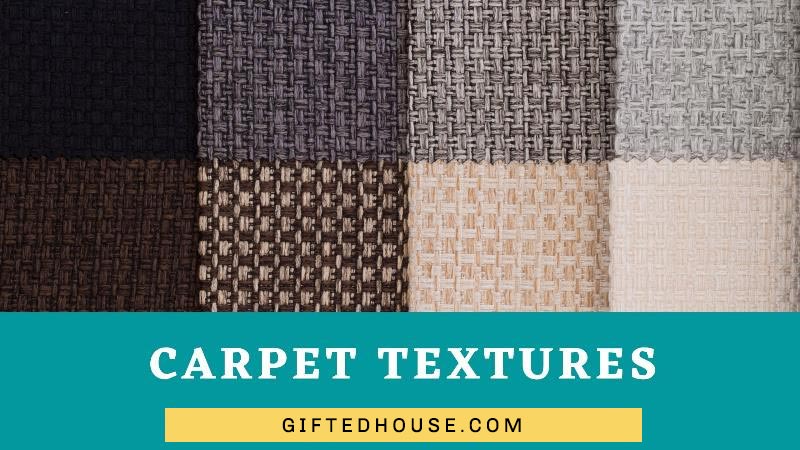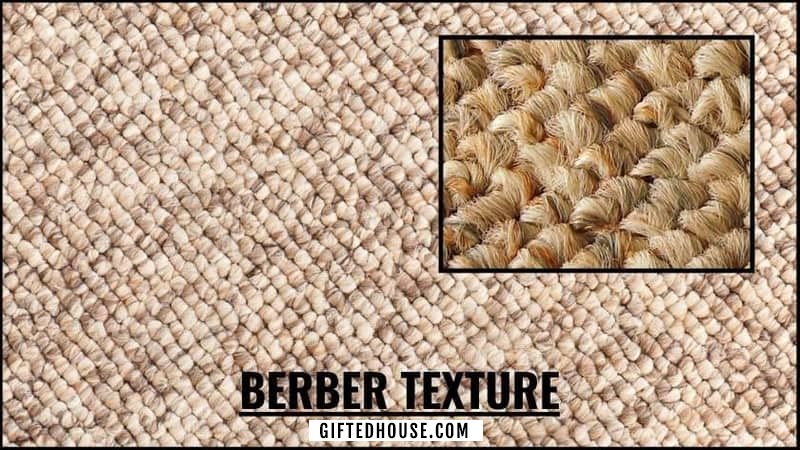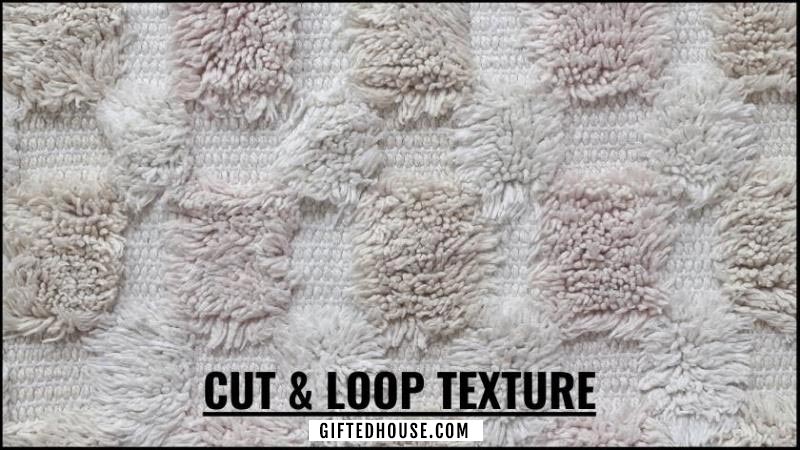
Carpet Texture Types
What are the different types of Carpet textures that are most popular? What follows are the most common textures of carpeting ranging from natural to synthetic materials. Knowing the benefits and issues that each texture offers should go into your decision-making process.
1. Berber
This type of carpeting is known for the thicker strands and high durability. Because of the strands and the weave, Berber carpet does not show footprints and is well suited for high traffic areas. The coloring also helps to hide dirt and debris while also being comfortable.
However, the loops are thick enough that they can catch and pull on things like claws, so they are not well suited for homes that have pets. Furthermore, Berber carpet is not as soft as most other types of carpeting, which should be considered before making your purchase.
2. Cut and Loop
This type of carpeting looks striped at first, but that is because the piles are cut at different heights for a unique appearance. Within the cut and loop family of carpets, there can be a wide range of appearances because of the length of the cut and size of the loops. The coloring also varies considerably with speckled, mottled, or a particular pattern that is employed.
You can choose from clean, clear patterns or a random look. The advantage of cut and loop carpet texture is that the nature of the carpet makes it easy to hide footprints.
However, cut and loop carpet can be more expensive depending on the exact type that you get. Plus, the random pattern may clash with your home or office décor, so be sure to consider all the patterns available before making a purchase.
4. Loop
If you remove the cut from cut and loop carpets, this is what you will get. The tufts that are looped have a clear, distinctive pattern and you can choose from different lengths. Loop carpeting is one of the older types available. For homes or offices that have a considerable amount of foot traffic, choosing a pattern with smaller loops offers advantages. The opposite is true for homes that have little foot traffic.
You can choose from multi-toned or solid carpet color designs. However, keep in mind that the loops may snag the claws of your pets, so they may not be a good choice in that regard.
4. Frieze
This type of textured carpet consists of curled or soft twists of tufts that are quite dense and comfortable. One popular variation of frieze carpeting is a type that has longer tufts and is called shag.
The advantages of frieze carpeting are considerable. The carpet itself is quite durable, thick, and plush enough to make it one of the more popular types available. It also lasts longer under normal use conditions. But that is in part a visual trick because the tufts have random positions that hide the wearing down of the fibers quite well.
If there is a disadvantage to purchasing frieze carpeting, you will notice that with the price that must be paid. It is one of the more expensive types, but it may be well worth it.
5. Plush
One of the most popular types of carpeting, plush is a cut loop pile that sits on the base of the carpet. Because of how plush carpeting is made, most types will be of a single color. However, there may be some multiple color options available.
What makes plush carpeting so desirable is that it is soft and comfortable while being springy enough to get back into shape after walking or sitting on the carpet itself. The tufts in the carpet have been cut to the point where it is flat to make it more durable, especially in high-traffic areas.
One interesting variation is velvet carpeting which is similar in construction to plush, but the density of the piles is different.
6. Textured Plush
This is a type of plush carpeting that features different heights for that textured appearance. You can actually feel the texturing as you walk on the carpet. One advantage over standard plush carpeting is that textured does not show the footprints. You can choose between plain textured and those that have a pattern that is embedded.
These are the most common types of carpeting that are available. While there may be other designs and patterns, the general construction of carpet follows one of the types that was listed.
How to Choose the Best Carpet Texture?
Now that you know what types of carpeting are available, the next step is selecting the one that is best suited for your home or office. There are certain factors to consider when making a decision. One of which is whether carpeting is the right solution for your flooring needs.
For example, kitchens and bathrooms almost never have carpet because of the humidity levels. If the same humid conditions exist throughout your building for reasons that cannot be curtailed, then you may want to consider alternatives to carpeting. However, for most people, this will not be a problem.
Budget
Remember, you can only get what you pay for when it comes to good carpeting. But also consider that some types of carpet last considerably longer than others. While other types may be easier to maintain. This means that you may pay more today for a carpet that will last considerably longer down the road. Meaning that you pay less in the future.
Home or Office
There is a considerable difference between carpeting for residential and commercial use. Businesses will often experience more foot traffic, but in most cases will not have people inside 24/7 as you might find in a home. Besides, businesses tend to have fewer pets that live inside as well.
For both business and homeowners, the ease of maintenance is a key consideration. The less it takes to clean, the less time and money you will have to spend to clean it.
For businesses, foot traffic is arguably the biggest consideration. Often you may have most people in an office walking around with their shoes or footwear on. For office the floor aesthetic is important, but a harder carpet texture would work fine. While for homeowners, comfort may be an overriding factor.
Materials
You can choose between carpets that use either natural or synthetic materials.
While the first impression may be that nylon or polyester is the best choice, do not rule out natural materials such as wool. While wool does have a few issues, it actually is quite long-lasting and easier to maintain compared to some synthetic materials.
However, wool carpets tend to be more expensive, so you will need to weigh that consideration as you choose the right materials that make up your carpet. Keep in mind that more expensive does not necessarily mean longer-lasting or lower maintenance.
Location
The location where you plan to get the carpet installed is also important. For instance, a soft plush may be the best carpet texture for the bedroom floor, whereas on a carpeted stair more preference is for safety.
Pets
Put simply, you’ll want to avoid carpet that has loops that may snag a claw. That means Berber, looped and cut & loop carpets may not be the best suited if you have dogs, cats, and other pets with claws around.
The plush carpet may be a good choice since there is little for even a determined dog or cat to tear up. But they are somewhat more difficult to maintain.
Final Thoughts:
Choosing between the different textures of carpeting should be considered the same as selecting the color and patterns that you want. The end result will be a carpet that best serves your needs while becoming an attractive, functional part of your home or business.


